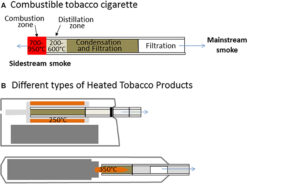In recent years, the global fashion industry has been scrutinized for its environmental impact and ethical practices. Fast fashion, in particular, is a topic that sparks debate. As consumers become more aware of the consequences of fast fashion, they seek to understand which brands fall into this category. One such brand that has gained significant attention is Halara. Known for its trendy and affordable activewear, Halara appeals to a wide audience, but the question remains: Is Halara fast fashion? In this article, we will dive deep into Halara’s business practices, assess whether they align with fast fashion characteristics, and explore the implications of this label on the brand and its consumers.
We will cover the definition of fast fashion, Halara’s supply chain and production methods, sustainability efforts (or lack thereof), and how it compares to other fast fashion brands. This comprehensive guide will provide insights into whether Halara can be classified as fast fashion and what that means for consumers looking to make more ethical fashion choices.
Is Halara Fast Fashion?
Yes, Halara can be classified as fast fashion. The brand’s business model focuses on producing trendy, affordable clothing at a rapid pace, similar to other fast fashion brands like Zara and Shein. Halara uses a fast-turnaround supply chain to meet consumer demand quickly. However, as is common with fast fashion, there are concerns about its sustainability and ethical practices. Consumers should consider these factors when making purchasing decisions.
What Defines Fast Fashion?
Fast fashion refers to the quick production of trendy clothing at affordable prices. Brands like Zara, H&M, and Shein are well-known for their fast fashion strategies. These companies capitalize on rapidly changing fashion trends, releasing new collections frequently and at a low cost to consumers. However, this comes with significant drawbacks, including environmental degradation, labor exploitation, and poor-quality products that don’t last long.
To understand whether Halara is fast fashion, we first need to explore the criteria that define fast fashion. The fast fashion industry is characterized by three main elements: speed, affordability, and mass production. These brands rely on a quick turnaround from runway to retail to meet consumer demands for the latest trends. They use low-cost materials, often synthetic, to produce large quantities of clothing at a minimal price.
When we apply these criteria to Halara, the brand checks off many boxes associated with fast fashion. Halara’s business model is centered around producing affordable activewear that is trendy and quickly manufactured. The company uses a direct-to-consumer approach, which allows it to keep prices low while still producing on-trend clothing.
Despite these similarities to fast fashion, Halara’s model has some nuances. The brand claims to offer “sustainable activewear,” and it highlights certain eco-friendly initiatives. But how sustainable is Halara’s production process, really? To answer that, we need to look more closely at its supply chain, materials, and production methods.
How Does Halara’s Supply Chain Operate?
Fast Turnaround Production
Halara operates similarly to other fast fashion brands with its fast-turnaround production. The brand keeps a close eye on fashion trends and consumer preferences, which allows it to quickly adapt its product offerings.
Materials Used in Halara’s Clothing
The majority of Halara’s products are made from synthetic materials such as polyester and elastane. These materials are commonly used in fast fashion due to their low cost and ease of production. However, synthetic fabrics contribute to environmental pollution, as they release microplastics when washed.
Ethical Concerns in Halara’s Production
Fast fashion brands are often criticized for unethical labor practices, including low wages and poor working conditions. Halara has not provided extensive information about its labor practices, which raises concerns about whether the brand follows ethical standards in its production process.
Mass Production and Inventory
One of the hallmarks of fast fashion is mass production. Halara produces its clothing in large quantities to meet high consumer demand, which aligns with typical fast fashion practices.
What Are the Environmental Impacts of Halara’s Business Model?
The fast fashion industry is notorious for its negative environmental impact, including high carbon emissions, water consumption, and textile waste. Halara’s reliance on synthetic materials, such as polyester, adds to this issue.
- Carbon Emissions: The transportation and production processes in Halara’s supply chain contribute to significant carbon emissions.
- Textile Waste: Halara’s low-cost, high-turnover products contribute to the growing problem of textile waste, as consumers are more likely to discard fast fashion items after a short period of use.
- Water Pollution: The use of synthetic fibers in Halara’s products contributes to water pollution through microplastic shedding during washing.
Given these factors, it is clear that Halara’s business model has a substantial environmental impact, similar to other fast fashion brands.
How Does Halara Compare to Other Fast Fashion Brands?
Several similarities emerge when we compare Halara to other fast fashion brands like Zara, H&M, and Shein. However, there are also key differences that set Halara apart.
- Zara vs. Halara: Zara is known for bringing runway trends to consumers in a matter of weeks. Halara, while not as trend-focused, follows a similar model of rapid production and affordable pricing. Both brands use synthetic materials and contribute to environmental pollution.
- H&M vs. Halara: H&M has made significant strides in promoting sustainable fashion through its Conscious Collection. Halara, on the other hand, markets itself as sustainable but does not provide enough transparency about its supply chain and materials to support this claim fully.
- Shein vs. Halara: Shein is often considered one of the most notorious fast fashion brands due to its ultra-fast production and low prices. Halara, while more niche and focused on activewear, shares Shein’s mass production and affordability business model.
Overall, Halara’s business model aligns closely with that of other fast-fashion brands, although it does not operate on the same scale as giants like Zara and Shein.
Is Halara Truly Sustainable?
Sustainability Claims and Marketing
Halara markets itself as a sustainable brand, but the reality of its practices suggests otherwise. While the brand highlights eco-friendly initiatives on its website, such as using recycled materials in some of its products, there is little evidence to support the claim that Halara is genuinely sustainable.
Lack of Transparency
A significant issue with Halara’s sustainability claims is the lack of transparency. The brand does not provide detailed information about its supply chain, labor practices, or environmental impact. Without this transparency, it is difficult for consumers to verify whether Halara’s products are truly sustainable.
Greenwashing Concerns
Halara’s marketing strategies raise concerns about greenwashing, a practice where brands exaggerate their environmental or ethical efforts to appeal to eco-conscious consumers. While Halara promotes its use of recycled materials, this represents only a small portion of its overall product offerings.
Bottom Line
After analyzing Halara’s business model, supply chain, and environmental impact, it’s clear that Halara falls into the fast-fashion category. Although the brand markets itself as sustainable, its reliance on synthetic materials, lack of transparency, and fast production cycle align it more closely with other fast-fashion brands. As consumers become more aware of the implications of fast fashion, it’s essential to make informed decisions about where we spend our money.
FAQ’s
Q. Does Halara use sustainable practices?
A. While Halara markets itself as sustainable, there is limited transparency about its supply chain and practices, raising concerns about greenwashing.
Q. What materials does Halara use in its clothing?
A. Halara primarily uses synthetic materials like polyester and elastane, which are commonly used in fast fashion.
Q. How does Halara compare to other fast fashion brands?
A. Halara shares similarities with brands like Zara and Shein regarding fast production and affordability, although it operates on a smaller scale.














